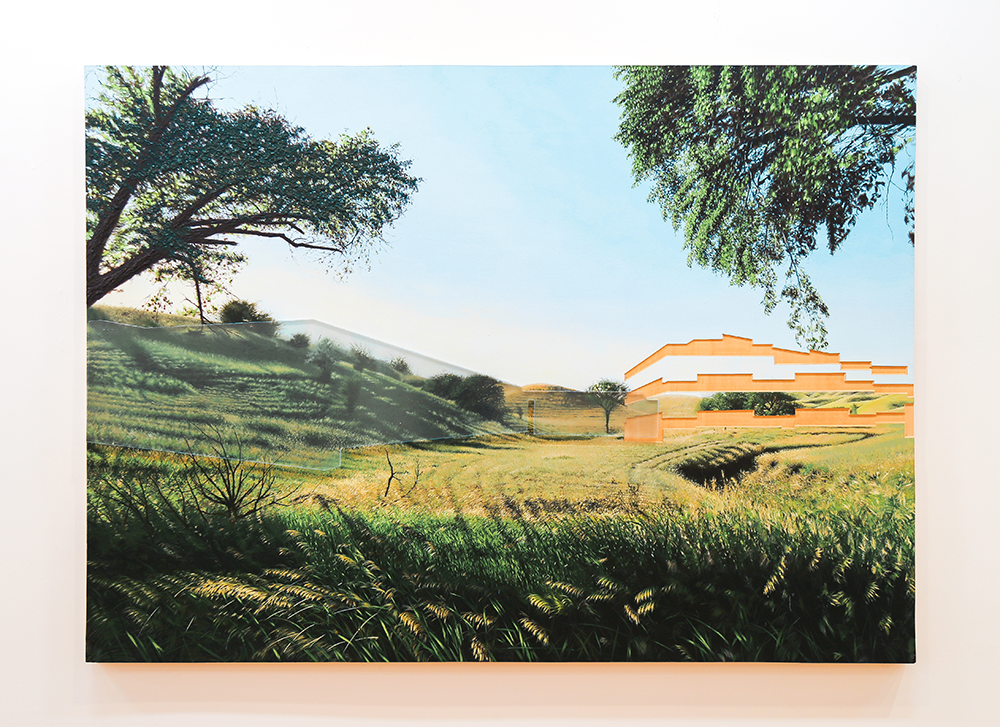Painting is, quite possibly, my least favorite visual medium. I’m not being disdainful, far from it—it’s simply that I gravitate toward mediums that are more immersive. That said, I was curious to see Paul Paiement’s recent exhibition, “Nexus,” as he created many of these paintings during a 2022 residency in the unincorporated community of Neskowin, Oregon. I was drawn to it because most of my childhood summers were spent in the little town of Otis, a mere nine miles down the 101; it is a landscape I’m wholly intertwined with. So, despite my lack of zeal for the medium, I went to Paiement’s show to see if he too found himself enchanted with the land.
Entering the gallery, I quickly realized that although Paiement created many of his landscape series in Neskowin, not every painting depicts that locality. Some of the works are references to views he’s seen elsewhere, such as the sunlit woods of Custer, South Dakota, and the yellowed range of Dixon, Montana. The works are exquisitely detailed—Mannerist in style—rendered in richly vibrant colors. Paiement’s process is a nuanced take on plein-air; he layers cut plexiglass atop his landscapes in patterns akin to modernist architecture. The works are positioned as a seamless blend of the man-made and the natural, a subversion of the trope that man is destroying nature. While the idea is laudable, the paintings didn’t read as a positive reconciliation, but rather as a collision.

Paul Paiement, Salmon River Marsh, 2, Oregon, 2022. Courtesy of Tufenkian Fine Arts.
This conflict is exemplified by the piece Chamberlain, South Dakota (2016). Paiement’s intricate landscape features an open field with a path running through it, flanked on the left by a grassy knoll, and on the right by an endless expanse of field. Splicing the painting horizontally is a sheet of plexiglass cut like a blueprint for a contemporary cabin. The overlay mirrors the landscape beneath it; the slope of the hill becomes the slant of a roof, the rolling fields become floor levels. The effect is not the subtle melding of organic and artificial—it’s jarring. The building Paiement depicts is a sleek and seemingly high-end cabin that appears to smother the landscape. The paint and plexiglass act in sharp contrast to one another, making it impossible to view the overlay as anything but an unwanted intrusion on the bucolic scene.
Although the show fell short of fully visualizing the reconciliation it aspired to, there were a couple of paintings that were more successful: those of Neskowin. Salmon River Marsh 2, Oregon (2022) portrays the salt marshes found by a turnoff from Highway 101. In the foreground is a single arching tree, and in the background the hills of Cascade Head. This too features an overlay shaped like a cabin, but unlike Paiement’s other pieces, it is made from painted plywood so that the landscape flows smoothly—hardly a man-made encroachment at all. Moreover, these Neskowin works come closest to capturing the harmony Paiement envisioned, and, while I’m certainly partial to the scenes, they made me realize I may have been overlooking some of the possibilities of painting. Maybe it’s not my least favorite medium after all.


